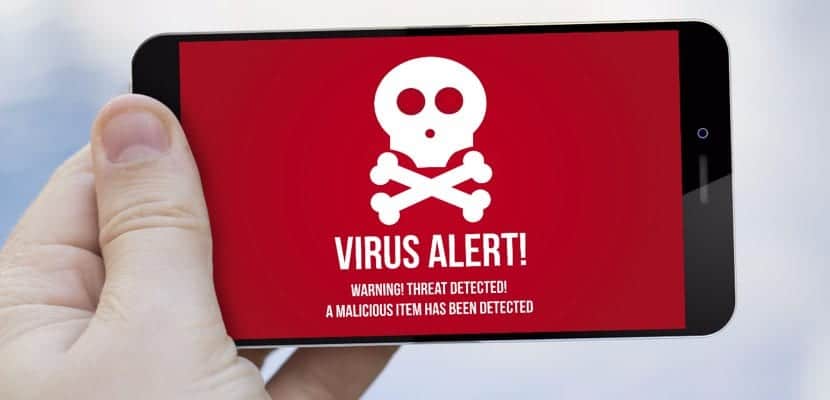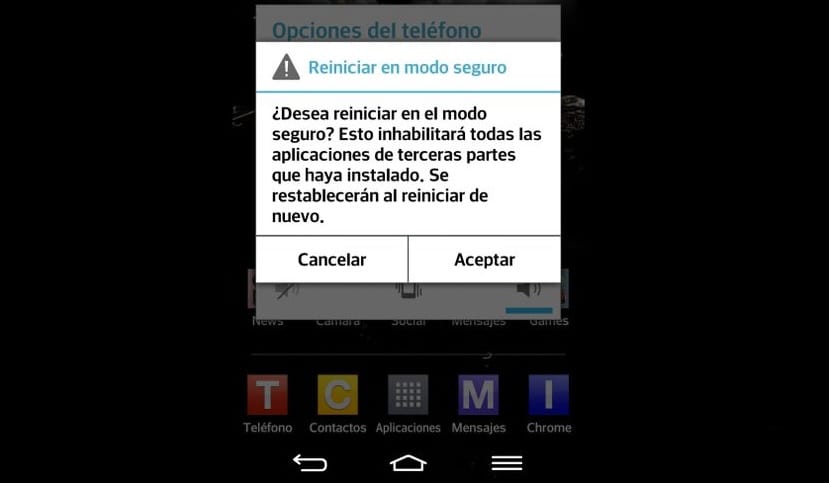
On occasion, Android users can see how your phone is infected by a virus or malware. This is something that is very annoying, because it directly affects the operation of the device. Since you can usually detect that you have a virus on the phone because the device has started to malfunction or carry out some actions that are not normal in it.
What can we do on these occasions? The important is proceed to virus removal on the phone. In Android there are some ways in which a virus can be removed from the phone. So it is important to know the possibilities that exist in this regard for users.
How does a virus sneak into Android?

It is possibly one of the main doubts that many users have. The most common is that a virus has crept in when an application has been downloaded. It is the most frequent way in which a virus manages to make its entry into Android. They can be applications that were on Google Play. Since sometimes there are apps that manage to bypass all the security controls that are in the store.
Although it may also be that apps have been downloaded from alternative stores. There are many other stores other than Google Play. In them you can get Android apps that in many cases cannot be obtained on Google Play. They are usually in APK format, which can present some problems in these cases. Since many of these stores do not have the security that the official store has. So it is possible that a virus or malware sneaks into it.
It may be that the app itself is the one with the virus. In other cases, take advantage of permissions on the phone to act. Therefore, when an app is installed on an Android phone, it is good to check its permissions at all times. It is not normal for a flashlight app to ask you for access to the microphone or contacts, for example.
How to remove viruses from Android
If something unusual is detected in the phone, since it works badly (it turns off or crashes frequently), it works much slower than usual, or suddenly you see an app that has not been installed, it is time to suspect that there is a virus on the phone . In this case, you have to take a series of actions on Android, with which to correct the problem and say goodbye to the virus in question.
Remove application

As we have said, the most common way for a virus to sneak into Android it is through an infected application. Therefore, if you notice that the phone is malfunctioning after installing this app, it is likely the source of the problem. So what you have to do is delete the application. In many cases this usually helps the phone to work well again. Although, it may not let you delete it.
Some malicious apps ask for administrator permissions, so it is not possible to delete them later. But there is always a solution to this problem. You have to enter the Android settings and then in the security section. Inside there is a section that is "Device Administrators". If it is not in this, it is likely to be in other settings. It is also possible that the name is different, depending on the brand of your phone.
This section allows you to see if there are apps that have administrator access. In case there are any that should not be there, we proceed to their elimination. Therefore, we deactivate it. In this way, You can remove this application from Android. Which should end said virus. Let's see in detail how to eliminate viruses on Android.
Antivirus
For users who have an antivirus on Android, it is possible to remove them with this software. On the one hand, we have Play Protect that comes on Android phones, which often fights against malware. But if you have any other antivirus installed, you will be able to use it and eliminate the virus that is on the phone in this way. It can be another easy way to kill any virus that has crept onto your smartphone.
Start in safe mode

If you have not been able to remove said application from your smartphone, then you have to find other ways. A way to end problems is to start the phone in safe mode. Starting Android in safe mode allows you to boot the phone in a limited way, in a security environment that prevents the virus from being able to act. In this way, it will be possible to detect the virus that is on the phone at that time and allow it to be eliminated in a simpler way.
The normal thing is that within the Android phone settings we have the possibility to use this boot in safe mode. In many cases, just press the power button for a few seconds, until safe boot mode exits. Some smartphone manufacturers call it emergency mode, it depends on each brand.
Factory restore

A third solution, although somewhat more extreme, is factory restore. This is something to do if the virus cannot be removed. Also if, despite having been removed, it shows that Android does not work well. It assumes that all the data on the phone is to be completely deleted. All the photos, apps or documents that are in it will disappear permanently. Therefore, it is advisable to always have a backup copy of everything, before deleting it.
It can be factory restored in various ways on Android. In many models it is possible to do it from within the settings. There is usually a section to restore within it. Although not all brands make use of this system. It is also possible to turn off the phone. Then, keep the power button and the volume up button (or volume down depending on the phone) pressed for a few seconds. Until the recovery menu comes out.
In it there are a series of options, one of which is Factory Reset. So using the volume up and down buttons, this option can be reached. Then, you just have to press on it with the power button. We then proceed to restore the factory phone. In this way, our Android smartphone returns to its original state, just as it left the factory. Virus free.